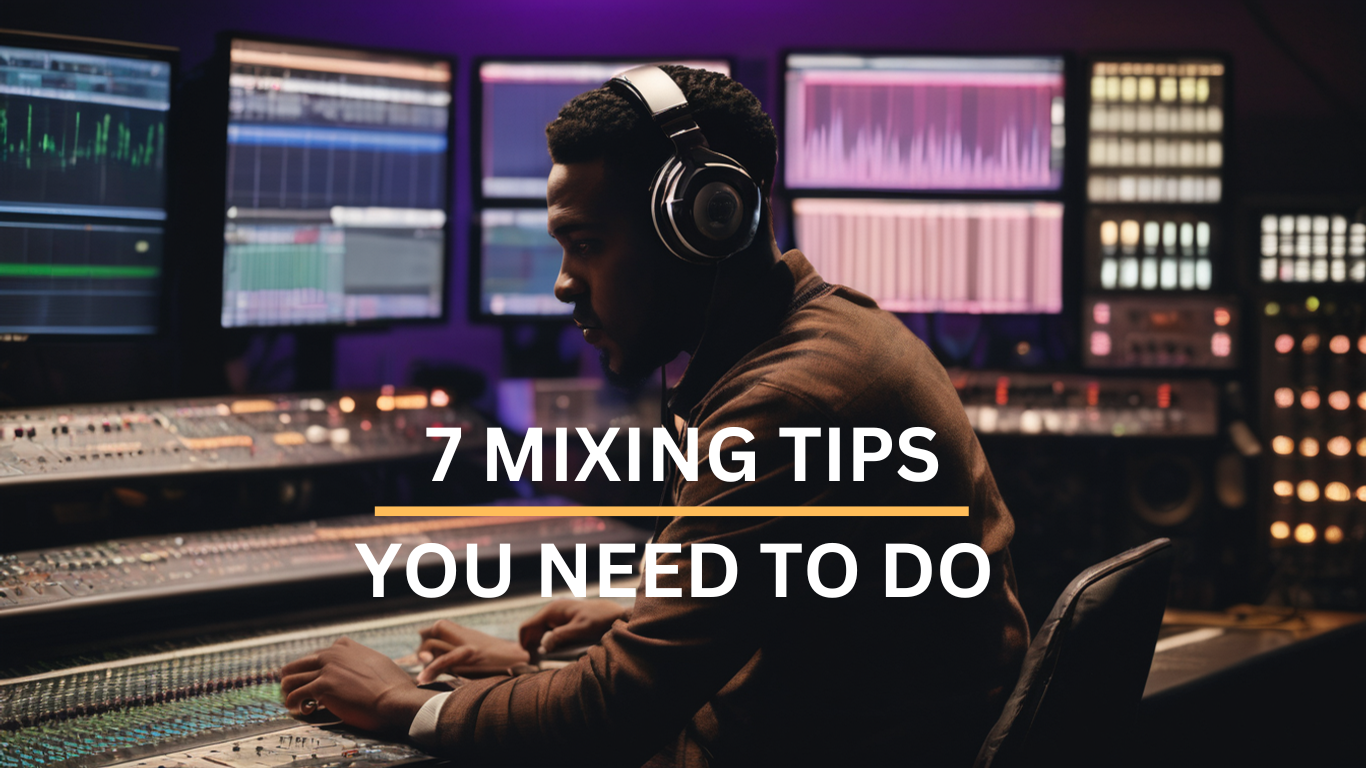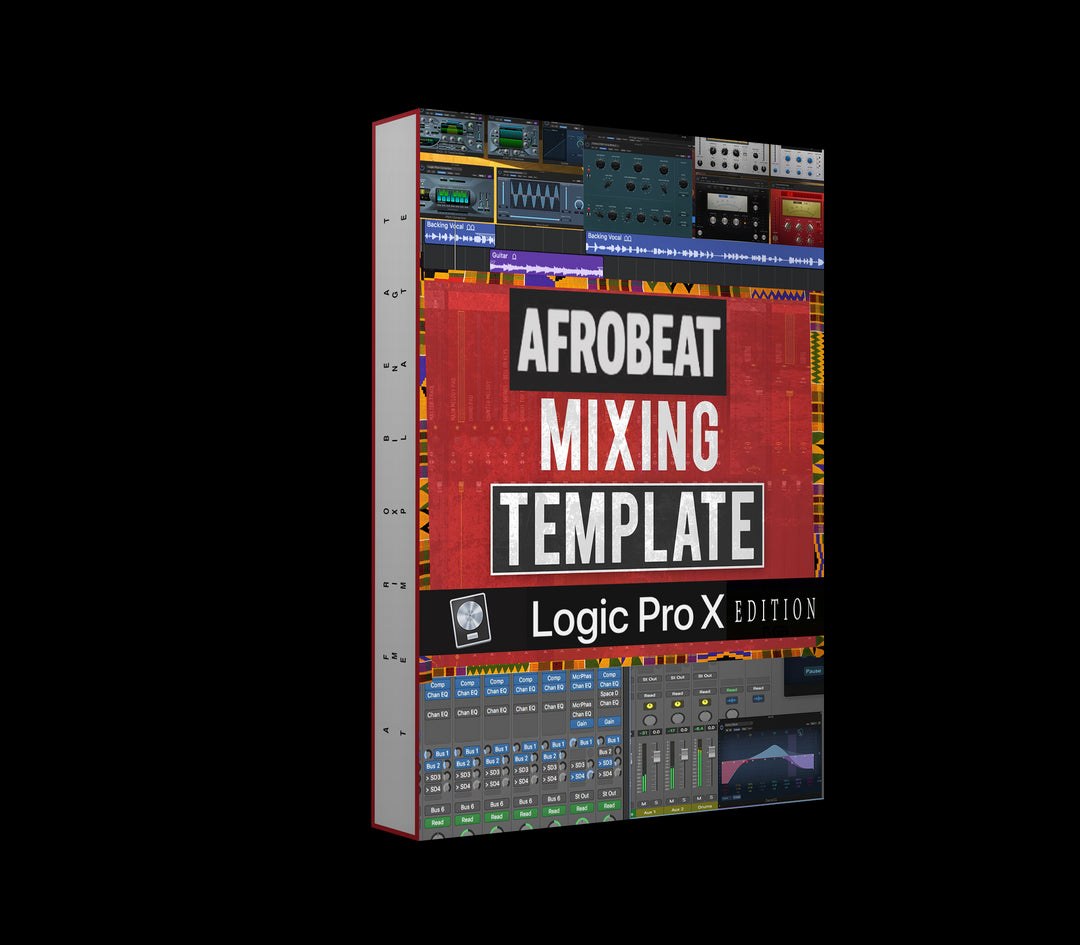7 Simple Mixing Tips You Need to Know

Mixing is a crucial part of the music production process, where individual tracks and elements are combined to create a cohesive and balanced sound. Whether you're a novice or an experienced mixer, understanding some simple yet effective mixing tips can significantly improve the quality of your mixes.
Good mixing is essential for various scenarios, including music production, podcast editing, sound design, and more. It ensures that each element in the mix is heard clearly, contributing to the overall impact and clarity of the final audio product.
Essential Equipment for Mixing
When it comes to mixing, having the right tools is key to creating great sounds. Let's break down the essentials:
-
Digital Audio Workstation (DAW): This is like your music studio in a computer. It's where you record, edit, and mix your tracks. Popular DAWs include Pro Tools, Ableton Live, and FL Studio. They come with features like virtual instruments, effects, and mixing tools.
-
Studio Monitors or Headphones: Studio monitors are speakers designed for accurate sound reproduction, while headphones give you a close-up, detailed listening experience. They help you hear every detail and make informed mixing decisions.
-
Audio Plugins: Audio plugins are software tools that add effects, EQ (equalization), compression, and other processing to your tracks. They can transform dull sounds into polished, professional ones.
By having a quality DAW, reliable studio monitors or headphones, and a collection of audio plugins, you're equipped to dive into the world of mixing and bring your music to life.
Simple Mixing Tips for Beginners
- Set Levels Correctly: Start by setting the levels of each track to avoid clipping or distortion.
- Use Panning Wisely: Experiment with panning to create width and separation in your mix.
- EQ Basics: Learn basic EQ techniques to carve out space for each instrument in the mix.
- Compression for Control: Use compression to control dynamics and add punch to your mix.
Advanced Mixing Techniques for Experienced Mixers
- Parallel Processing: Explore parallel processing to add depth and character to individual tracks.
- Multiband Compression: Utilize multiband compression for precise frequency control and tonal shaping.
- Automation Mastery: Master automation to add movement and dynamics to your mix.
Common Mistakes to Avoid During Mixing
- Overprocessing: Avoid overprocessing individual tracks, which can lead to a muddy mix.
- Ignoring Reference Tracks: Always reference your mix against professional tracks for comparison.
- Lack of Headroom: Leave enough headroom in your mix to prevent clipping and ensure mastering flexibility.
Mixing Tips You Need To Start Implementing Now
1. Referencing and Comparing Mixes
Regularly referencing and comparing your mix against professional mixes is like having a friendly mentor guiding you through your music journey. When they listen to both your mix and a professional one side by side, they can easily spot areas where you can improve. It's like having a benchmark to measure your progress and ensure that your sound quality is on par with the best.
This way you're listening, comparing and tweaking your music to make it stand out and compete with others in the industry.
2. Using Automation and Effects in Mixing
Experimenting with automation and effects like reverb, delay, and modulation can really enhance the way your music sounds. When they say "automation," it means controlling different parts of the music, like volume or effects, over time automatically.
Imagine smoothly fading in a background sound or making a vocal echo gradually louder. It adds a dynamic touch that keeps listeners engaged. Effects like reverb make your music feel like it's in a big, spacious room, while delay adds a cool echo effect. Modulation effects, on the other hand, can make your music sound wavy or shimmering, adding depth and character.
Together, they bring your mix to life, making it more interesting for everyone listening.
3. Managing Time and Workflow During Mixing
Managing time and workflow during mixing involves creating a clear plan and sticking to it. First, you should organize your sessions by grouping similar tasks together, like adjusting levels or adding effects. This helps you stay focused and efficient.
Setting realistic timelines is crucial; you should break down your goals into smaller, manageable tasks and allocate time for each. Regular breaks are important too, as they prevent burnout and keep creativity flowing.
By establishing a structured workflow and managing time effectively, you can enhance productivity and achieve better results in your mixing endeavors.
4. Listening Environments and Monitoring Systems
Creating a well-treated listening environment and using accurate monitoring systems are super important for making smart mixing decisions. When we talk about a "listening environment," we mean the space where you listen to your music or audio projects. It could be your studio, bedroom, or even a dedicated listening room.
Imagine you're mixing a song and you can't trust what you're hearing because of a bad setup or poor acoustics in your room. It's like trying to cook without tasting your food along the way – you won't know if it's turning out the way you want.
By setting up your listening space properly and using good monitors, you can be more confident that what you hear is accurate. This means you'll make better decisions about things like volume levels, EQ (that's tweaking the bass, treble, and midrange), and effects like reverb or delay.
To sum it up, a well-treated listening environment and accurate monitoring systems help you hear your music or audio projects clearly and make the right choices as you mix.
5. Collaborating and Communicating During Mixing Projects
Effective communication during mixing projects is crucial for ensuring everyone involved understands the vision and goals. When we communicate clearly with clients, collaborators, and artists, we create a shared understanding that guides us throughout the process.
This clarity helps us stay on track, make informed decisions, and address any concerns or feedback promptly. By actively listening, asking questions, and providing updates, we build trust and collaboration, leading to satisfying outcomes for everyone involved.
6. Balancing Creativity and Technicality in Mixing
Balancing creativity and technicality in mixing is like walking a tightrope between freedom and structure. When you embrace your creative side, you can explore new sounds, experiment with effects, and bring your unique vision to life.
However, it's crucial not to neglect the technical aspects. By understanding concepts like EQ, compression, and levels, you can ensure your music sounds professional and polished. It's a dance where you get to express yourself while also maintaining high-quality standards.
Remember, creativity fuels the soul, but technicality refines the craft.
7. Troubleshooting and Problem-Solving in Mixing
When it comes to mixing music, developing troubleshooting skills and problem-solving techniques is crucial. This means learning how to tackle common challenges that arise during the mixing process so that they don't hinder your progress.
For example, if you're struggling with balancing the levels of different instruments, you can try using EQ adjustments or panning to create more space and clarity in the mix. By being proactive and systematic in addressing these issues, you can achieve the desired sound and enhance the overall quality of your music.
Conclusion
Mastering these 7 simple mixing tips can significantly enhance your ability to produce high-quality audio. They provide a solid foundation for improving your mixing skills and achieving professional results.
When you consistently practice these tips, you train your ears to discern nuances and make informed decisions during the mixing process. Trusting your ears is crucial as they guide you in making adjustments that enhance the overall sound.
By continually pushing the boundaries of both creativity and technical proficiency, you'll not only refine your mixing abilities but also discover new ways to elevate your audio productions.






![amapiano essential sample pack download,Free Download Amapiano Log Drum Bass Pack Amapiano .WAV Samples [Works on Logic Pro ,FL Studio Abelton Live , Reason, all DAWs] Logic Pro Tutorial, free amapiano drum sample pack,Drum Loops + Construction Kit Loops Percussion Loops, Guitar Melody Loops, MIDI Melody Loops, FL Studio Fruity DX10 - Log Drum Presets Log Drums (MIDI Melody) Log Drums (Wave Audio) MIDI Snare DRum Loops + One Shots Rolls and Fills Shaker Loops Vox Chops VST Plugins Presets FX + BONUS](http://afrobeatproducers.com/cdn/shop/files/AmaPianoEssentialSamplePack.png?format=jpg&v=1701804534&width=1080)




![amapiano essential sample pack download,Free Download Amapiano Log Drum Bass Pack Amapiano .WAV Samples [Works on Logic Pro ,FL Studio Abelton Live , Reason, all DAWs] Logic Pro Tutorial, free amapiano drum sample pack,Drum Loops + Construction Kit Loops Percussion Loops, Guitar Melody Loops, MIDI Melody Loops, FL Studio Fruity DX10 - Log Drum Presets Log Drums (MIDI Melody) Log Drums (Wave Audio) MIDI Snare DRum Loops + One Shots Rolls and Fills Shaker Loops Vox Chops VST Plugins Presets FX + BONUS](http://afrobeatproducers.com/cdn/shop/files/AmaPianoEssentialSamplePackVol.2.png?format=jpg&v=1701804430&width=1080)



